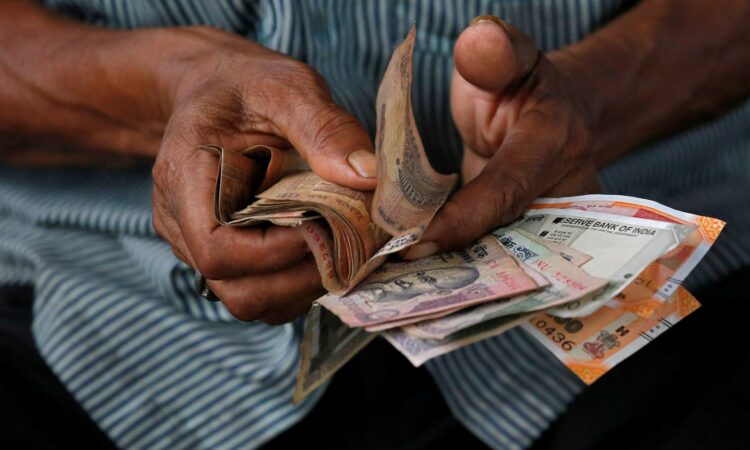
Item 1 of 2 An attendant at a fuel station arranges Indian rupee notes in Kolkata, India, August 16, 2018. REUTERS/Rupak De Chowdhuri/File Photo
MUMBAI, April 2 (Reuters) – The Indian central bank’s soon-to-be-implemented regulation saying exchange-traded rupee derivative transactions can be used only for hedging will cause volumes to plunge more than 80%, dealing a major blow to the segment, six brokers said.
Since the regulation was mooted in January, brokers have feared that several proprietary traders and individual investors, accounting for over three-quarters of the volume, will not be able to meet the underlying exposure requirement.
“Once this rule comes into effect, we expect a more than 90% fall in our volumes. The market volumes will likely drop by a similar margin,” said Arnob Biswas, head forex research at SMC Global Securities.
“From our point of view, this market is practically over, at least for the time being.”
The Reserve Bank of India said it would allow exchanges to offer forex derivative contracts involving the rupee only for contracted exposure, or hedging, compared the current allowance of up to $100 million without any explicit underlying exposure.
Small clients typically use the forward market via banks to hedge their currency exposures and will always have an underlying, a source aware of the central bank’s thinking said on the condition of anonymity.
“Only large speculators may stand to lose some business opportunity,” this person added.
“The unintended consequence of this will be that liquidity will dry up significantly and the small and medium sized companies – the hedgers – will lose access to risk management tool,” said Anindya Banerjee, head research – FX and interest rates at Kotak Securities.
USD/INR April futures open interest dropped by $833.6 million, or 18.5%, on Tuesday.
An official at a large brokerage pointed out that only a small portion of their clients – corporates and foreign portfolio investors – would be able to meet the hedging specification.
According to a recent publication by NSE, India’s leading exchange for currency derivatives, corporates accounted for just 3.9% of the currency derivatives turnover based on notional turnover in February while foreign investors contributed 6.2%.
Proprietary traders and individual investors were responsible for 80% of the turnover.
“These were the market markers and the liquidity providers. With them out, who will provide prices to the hedgers?,” the official said.
The official further noted that hedging activity for foreign investors might shift to the local over-the-counter and non-deliverable forward markets.
“This is completely unforeseen and it is difficult to understand what bought this on,” said SMC’s Biswas.
Exchange-traded rupee derivatives, first introduced in 2008, have seen average daily trading volumes on dollar/rupee futures climb to $2.5 billion from $142 million in 2008, making this an important segment for India’s forex markets.
Sign up here.
Reporting by Nimesh Vora; Additional reporting by Swati Bhat; Editing by Varun H K
Our Standards: The Thomson Reuters Trust Principles.

